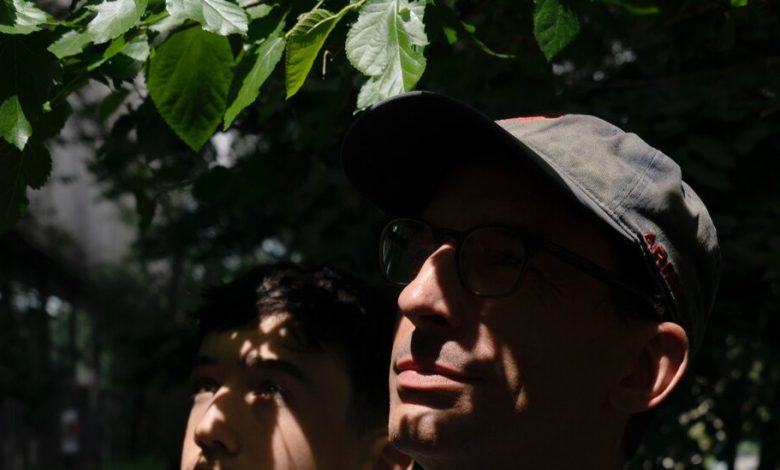The Foreign Language That Changed My Teenage Son’s Life

Even as a little kid, my son Max had a way of immersing himself in the subjects he cared about. The first one I can remember was Thomas the Tank Engine. Max had a hand-me-down wooden train track set up on a low platform in our living room, and at age 3, he would spend hours toddling around the outside, pushing trains and telling made-up stories, lost in the world of Thomas and Percy and Gordon. “Hamilton” came next, the soundtrack on repeat in the car for months, then a brief but intense dive into Mixels, a discontinued Lego collection, and then another into a Roblox game called Bee Swarm Simulator. With each one, Max would go deep, finding satisfaction not just in the playing but also in the experience of plunging himself into a new and unfamiliar world and mastering all of its contours.
Listen to this article, read by Robert Petkoff
Open this article in the New York Times Audio app on iOS.
When he wanted company on these journeys, I was often the one who went along. I logged serious hours by his side, shunting wooden trains onto sidings and leading my digital bees on a search for pollen. I hunted down old Lego packs for him on eBay and took him to Washington to see the Jefferson Memorial. I occasionally would try to steer him away from the video games and toward the history books, but mostly it didn’t matter what I thought. His interests were his interests, and he explored them the way he wanted, not the way I did.
There was a part of me that felt proud of his deep dives, but if I’m being honest, they often made me uneasy. When you’re a kid, knowing a ton about obscure subjects can be an early sign of intellectual curiosity, but just as often, it can be a symptom of misfiring neurons, an omen of future mental struggles. Sometimes the child who can tell you everything there is to know about dinosaurs or baseball statistics or the solar system grows up to be a groundbreaking scientist or a brilliant entrepreneur. Sometimes he just grows up to be a guy who never moves out of his parents’ basement.
As Max got older, his explorations grew more solitary, which led me to a new worry: that his interests were pulling him away from his fellow humans rather than toward them. (To protect his future privacy, I’m calling him by his middle name in this article.) Max was always a shy kid, slow to warm up to new people and content to spend long stretches on his own. The pandemic, which hit when he was 10, didn’t help. Academically, remote school worked out fine for Max, but socially, it added to his isolation. When in-person classes began again, he kept to himself more than ever, quiet behind his mask. At home, with his family, he was thoughtful and funny and quick, telling stories and asking endless questions. But when he got to school in the morning, it was like a curtain came down between him and the world.
A new subject came along in those pandemic years to once again capture his imagination: birds. Who knows why? Maybe creatures that could fly and soar were an appealing notion during endless lockdowns, or maybe birds were just another vast universe for him to map. In Texas, where we live, there are 47 species of warblers alone, each with its own markings and songs and migration patterns to analyze and commit to memory. Max borrowed bird books from the library and lay in bed reading them, absorbing facts and patterns, gathering arcane knowledge. He hung out on nature websites, posting photos and trading IDs with birders many times his age. He walked through fields at dawn, binoculars in hand. Once again he descended (or maybe ascended, this time), and once again I followed him. We spent many weekend mornings together walking beside the lagoons at our local sewage-treatment plant, looking for ruby-crowned kinglets and crested caracaras.